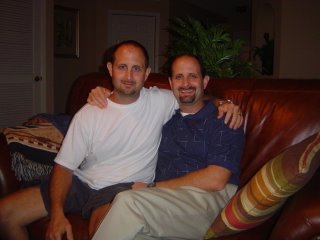Many Christian denominations hold as a doctrine that the Scriptures of the Old and New Testaments are the only divinely inspired teachings that constitute the rule and faith of a Christian life.
In Jesus’ day, commentary on the Written Torah, which was only translated verbally through memorization, until 200 A.D. was also considered authoritative and divinely inspired? The Oral Torah, like today's printed commentaries, was used to offer direction for obeying God’s written Word where the instructions were not completely clear.
For instance, not working on the Sabbath is an instruction of God, but the definition of work is left for interpretation; that’s where the Oral Torah is given by teachers with the anointing to interpret the Scriptures for God’ people. These oral teachings are still known today, in written form, as the Mishnah.
Here is a rabbinical parable that was taught by Jewish sages during Jesus time and used to emphasize the importance of both the Written and Oral Torahs. It is taken from the works of Dr. Brad H. Young and his book The Parables: Jewish Tradition and Christian Interpretation, pg. 91.
The King’s Wise and Foolish Servants
My son, were not both Bible and mishnah spoken by the mouth of the Almighty? If so, what is the relationship between them? The distinction between them may be illustrated by a parable. To what may the matter be compared? To a mortal king who had two servants whom he loved with utter love. To one he gave a measure of wheat and to the other he gave a measure of wheat, to one a bundle of flax and to the other a bundle of flax. What did the wise one of the two do? He took the flax and wove it into a tablecloth. He took the wheat and made into fine flour by sifting the grain first and grinding it. Then he kneaded the dough and baked it, set the loaf upon the table, spread the tablecloth over it and kept it to await the coming of the king. But the foolish one of the two did not do anything to it.
After many days the king came into the house and said to the two servants: My sons, bring me what I gave you. One brought out the table with the loaf baked of fine flour on it, and the tablecloth spread over it. The other brought out his wheat in a basket with the bundle of flax over the wheat grains. What a shame! What a disgrace! Need it be said which of the two servants was the more beloved? He of course who laid out the table with the loaf baked of fine flour upon it.”When the Jewish listeners were hearing this parable, they would recognize the hard work that goes into making bread and cloth, which would “…remind the audience of the way the Mishnah refines the deeper meaning of the Bible.”—Young
Both the written and oral Torahs were considered to be the words of God.
Jesus often advocated the use of oral Torah, which can be seen when reading of his miracles. When He healed on the Sabbath, in most cases, he never touched the person and only healed with words, which was allowed by the Jewish religious authorities long before Jesus was born. In other cases Jesus used touch on the Sabbath to heal, despite the written Torah and the instructions of the Jewish religious authorities. In these cases, Jesus appears to be breaking the Sabbath until we are familiar with the teachings of the Oral Torah.
The Sadducees did not recognize the authority of the Oral Torah, but they did recognize the Judean (Jewish religious authorities in Judea) decision to break the Sabbath in order to keep the instruction to circumcise on the eighth day, due to the obvious need for compromise.
In John 9:14 we read that Jesus healed a blind man, using touch, on the Sabbath, which brings us to Jesus’ use of the oral Torah.
In the Bible, God says a person can not work on the Sabbath (Exodus 20:9-10, 23:12, 31:14-15, 34:21, 35:2: Leviticus 23:3; Deuteronomy 5:12-14). God also says that a child “must” be circumcised on the eighth day (Genesis 17:12, Leviticus 12:3). The Judeans had already settled the matter and stated that the keeping of the Sabbath will be broken in order to keep the mitzvah (commandment) to circumcise on the eighth day.
There is also a teaching of the Oral Torah which says that a person can break the Written Torah in order to keep the Spirit of the Written Torah, which is to give life. With that portion of the Oral Torah, along with the instructions that a person could break the Sabbath to circumcise, an Oral Torah observant Jew could surmise that a healing could take place, even with touch. Jesus could heal in the presence of Sadducees as long as He didn’t touch. In the presence of Pharisees, He could draw from the above commandments, both oral and written.
Because of the Pharisaical flexibility of the Oral Torah, a Rabbi with "authority," like Jesus, meaning that He was able to interpret the Torah and give commands for "binding and loosing" or "forbidding and permitting," he could draw from the command that a person could circumcise on the Sabbath and conclude that it is also allowable to heal a person of a childhood illness or physical defect, such as blindness.
Jesus used what is called a Kal v’ chomer (‘light and heavy’) argument to defend his actions. This is when a sage would remind an accuser that the mitzvah (commandments) must be weighed in order to keep the “spirit of the law,” which is to give life (not necessarily meaning the opposite of death, but a life that is more whole).”By reminding the Pharisees of their own oral traditions, Jesus was able to justify a healing on the Sabbath, as he was also an advocate of the Oral Torah.
If Jesus were being questioned by Sadducees, this would not have been as easy to defend, because Jesus used touch in the healing miracle. The Sadducees did not believe in the Oral Torah. They were very strict and rigid in following the Written Text.
Think of it this way: If you were living in the place and time of Jesus and you wanted to fish with your kids on the Sabbath, some Pharisees would say, “No problem. Have fun,” other Pharisaic sages would say, “You can fish, as long as you don’t clean the fish and prepare them for cooking.” This is knows as “binding and loosing.”All Sadducees would say, “Absolutely not! You are not allowed to fish, because it is a form of work. No exceptions.”
The Pharisees, like Jesus, would “bind and loose” differently, according to their own interpretation of what it meant to work. They would “bind (forbid)” what they believed to be unacceptable and “loose (permit)” that which they deemed acceptable, such as fishing for fun on the Sabbath. The Sadducees were strict literalists. No work meant “No Work!”Jesus was being confronted by the more flexible Pharisees in John 9.
Today we will often hear or even say that the preacher or teacher is going to bring to us a “message from God.” By saying this, we are advocating an ancient belief that it is not only the written Word which is divinely inspired and given authority by God, but the oral teachings are believed to have the same inspiration and authority.
Should this not be the case, it would be difficult to expect a “message from God,” unless the teacher was to read strictly from the Bible. In that case, the teacher would be following the custom of the Sadducees who would only use the Written Word and did not believe in Oral Torah like the Pharisees and Jesus.
Forever learning,
Johnny


